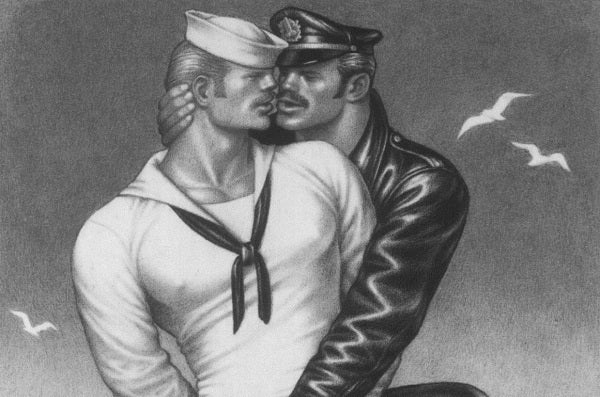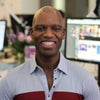
A Thai friend who has struggled with whether to come out to his parents for most of the years I’ve known him finally took the plunge several months ago. Their reaction – or in his father’s case, non-reaction – wasn’t even close to the fire and brimstone he’d been expecting.
Lack of angst aside, his mother’s comments were still somewhat troubling, as they offered a revealing reflection of gay identity from the outside.
“But you’re not a lady boy,” she said. “How can you be gay? You don’t act gay. You’re masculine. I thought gay men were supposed to be feminine.”
“Although most of us should know better, many gay men still consciously and subconsciously equate gayness with femininity...”
Common mistake – and not just with clueless straight people of a certain age. Although most of us should know better, many gay men still consciously and subconsciously equate gayness with femininity, as if to be gay is to have behavioral qualities normally associated with women. The implication is there every time someone on Grindr has to specify “Masc4Masc” in his profile, as if he’s searching for a needle in a haystack.
Gay men can be obsessive when it comes to categorizing themselves, especially when they hit the hook-up grid. “Masc,” “fem,” “top,” “bottom,” “hung,” “sub,” “dom,” “twink,” “bear,” “otter,” “daddy,” “BBC,” and all of the other racial markers have practically become the bane of being gay. They limit our gay experience, pulling us apart rather than bringing us to together. On Grindr, Scruff, and other meet/meat apps, they lift some of us up while putting others down.
If we’re going to call out our obsessive categorization, though, we should call it out for the right reasons. “Masc4Masc” may be both misguided and dismissive of anyone who swings too close to the crusty gay stereotype, but is it indicative of self-hating internalized homophobia as its critics often suggest? By publicly identifying as “masculine” and seeking the same, is one somehow rejecting his own gayness?
Well, only if, like my friend’s mother, you associate gay men with lady boys – or think that to be gay means to act a certain way and talk a certain way (i.e., feminine). Anyone who has spent any significant time in the real world knows that gay men are not all lisps and limp wrists. Not that there’s anything wrong with either, but they’re no more solely representative of gayness than “butch” is of straightness.
Masculine is as legitimate a gay quality as feminine. In fact, it’s been a cornerstone of gay culture for decades. In the post-Stonewall 1970s, Tom of Finland-style masculinity practically defined gay culture, whether it was aspirational, celebratory, or closer to parody. Chest hair and handlebar mustaches were hot, and The Village People dominated the disco soundtrack. Remember the most successful gay pop act of the era? The music was unabashedly gay while the members represented some of the most masculine male identities: cop, cowboy, construction worker, military man, leather-clad biker, etc.
The boys in the band were notably hirsute, which is a supposedly masculine quality that’s recently made a huge gay comeback, and not just with so-called ”bears.” Chest fur is in again, and facial hair is shaggier than ever. Though for some, hairier might be a means to blend in with the straight male masses, for others, it’s nothing more than a styling preference. The deep voice that may or may not accompany the look is just how they talk.
Meanwhile, the gym continues to be the gay church, the place where one religiously tends to his musculature, the ultimate physical manifestation of masculinity. On Saturday nights before Sunday school, it’s hard to turn a corner in a gay bar without spotting yet another tattoo-covered bicep. Once seen as the fashion statement of the bad boy (another masculine archetype), tattoos are now as popular with gay men as they are with straight men.
We have gay sports stars, gays in the military, and as many gays in uniforms as in suits. So why are we still equating gay with drag queens and lady boys? If rejecting masculinity in one’s fellow gays (“Masculine for mascara”) isn’t automatically deemed homophobic or even problematic, then neither should pursuing it.
I’m not saying that internalized homophobia isn’t a problem in the gay community, because it is. It’s in the very use of the phrase “straight-acting.” It’s in the affected masculinity that some employ in order to remain closeted. It’s all over “no fems,” “real men,” and “men who act like men.” But it’s not in merely being masculine or being sexually attracted to guys who are.
“There’s no one way to be gay.”
We spend so much time and effort rallying against gay stereotypes, but aren’t we only reinforcing them when we suggest that to desire masculine men is to somehow be anti-gay? “Masc4Masc” might not be sending the best message to gay guys who don’t qualify, but dismissing “Masc4Masc” as being anti-gay isn’t sending a particularly healthy message to gay guys who do qualify. We’re all men, and we’re all gay.
Equating gay with feminine or flamboyant or camp does as much of a disservice to gay people as rejecting those qualities. It’s like expecting a black person to “act hip hop.” There’s no one way to be gay. Some turn on the camp, while others overcompensate with hyper-masculinity. Most of us, however, probably fall somewhere between the two, the exact location being dependent on the time of day or the company we happen to be keeping at the moment.

Masc4Masc in iconic gay art
Earlier this year, I had a weekend fling with a 27-year-old who claimed a preference for a “guy’s guy” in his Grindr profile. I assumed that was supposed to be his diplomatic way of saying “Masc4Masc,” which gave me pause when he first approached me. But he was so respectful that I went out with him anyway.
At one point, I asked him about the “guy’s guy” thing, because, well, I’ve never really thought of myself as one.
“So what do you mean by that? Are you trying to say you’re looking for “straight acting?” I asked, cringing at how easily the gay Grindr cliché rolled off my tongue.
“No, not at all. That’s not what I’m looking for. I only wrote that as a joke,” he responded.
He didn’t seem to get the punchline any more than I did, which made me wonder why he’d written it anyway. But just as I decided to drop it, he said something that made a bigger impression on me than anything he’d say all weekend.
“I don’t really care about how masculine a guy is, but what I find so sexy about you is that you’re masculine, but every so often there’s a little hint of camp,” he explained.
Now he definitely had my undivided attention.
“It’s just in certain moments, when you say a certain phrase or make a small movement,” he continued. “I hope I’m not offending you be saying that.”
On the contrary, it was the nicest thing he’d ever say to me. It meant I was being myself, naturally and unaffectedly falling somewhere between feminine and masculine on the gay continuum. I’m hardly alone there.
But there’s nothing wrong with either extreme – being it or wanting it. They’re both equally legitimate manifestations of gayness and manliness, as are all points in between. Guys who write “Masc4Masc” may very well be self-hating, but not just because they’re desperately seeking masculine. That’s more in the realm of self-denial. It’s like going into an ice-cream store full of flavors and choosing vanilla every time.
Even real men who don’t eat quiche know that’s just a waste of calories.
